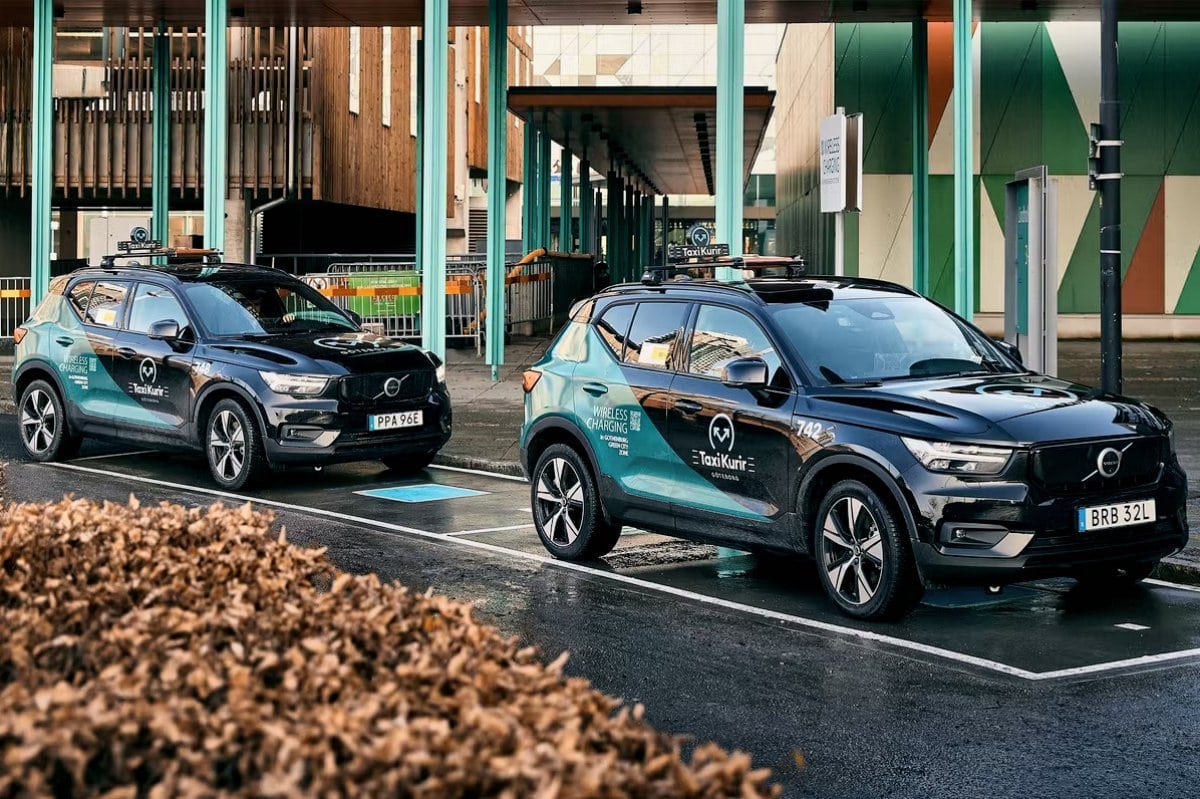Volvo trials inductive electric car charging in Gothenburg taxi ranks

Volvo has installed inductive charging pads in a number of Gothenburg taxi stands to test wireless charging of electric taxis.
The automaker is running a three-year pilot scheme with Cabonline, the largest taxi operator in Gothenburg, to test inductive charging pads supplied by Momentum Dynamics. Volvo has supplied specially equipped Volvo XC40 Recharge EVs to test the concept.
The cars will be used for more than 12 hours a day and a total of more than 60,000 miles of travel a year across the three years of the pilot.
The wireless charging speed will top 40kW, four times faster than a Level 2 residential charger and nearly as fast as a 50kW DC fast-charger. The technology should be capable of supporting faster speeds of up to 75 kW, Volvo claims. And more advanced 800-volt batteries would allow for faster wireless charging speeds just like it allows for faster wired charging.
The idea is to charge up the cars while they are waiting on the rank, so they will get frequent, short top-up charges rather than time-consuming full recharges. The wireless pads automatically identify the vehicle being charged and bill the taxi company automatically.
“The taxi application is very good because you can charge while you wait for customers,” said Robert Eriksson, Volvo Cars senior technical leader with. “You can test the technology, you can test the charging speed, and you can test what the cab drivers like about having this opportunity versus going to a charging station and hassling with cables.”
Eriksson said the inductive chargers worked at above 90% efficiency, close to onboard AC charging. And by saving the taxi driver from having to drive miles to find a charge point, any efficiency losses are quickly erased.
Volvo has retro-fitted the Momentum Dynamics charge pads on the underside of the XC40 Recharge EVs. These pads are only around 2.5cm thick, so they could easily become a factory-fit option.
Drivers need to park within 10cm of the charging pad target, but they’re helped by a screen in the car that tells them if they need to move forward or back to get maximum speeds. Volvo says automatic parking technologies could handle precision parking automatically in future.
Volvo also says the technology has other significant benefits, including getting rid of charge points and cables. The infrastructure is hidden under the road, and the pads could be distributed up to 100m away from the charging “hub”. Car parks and residential streets could also accommodate the technology.



